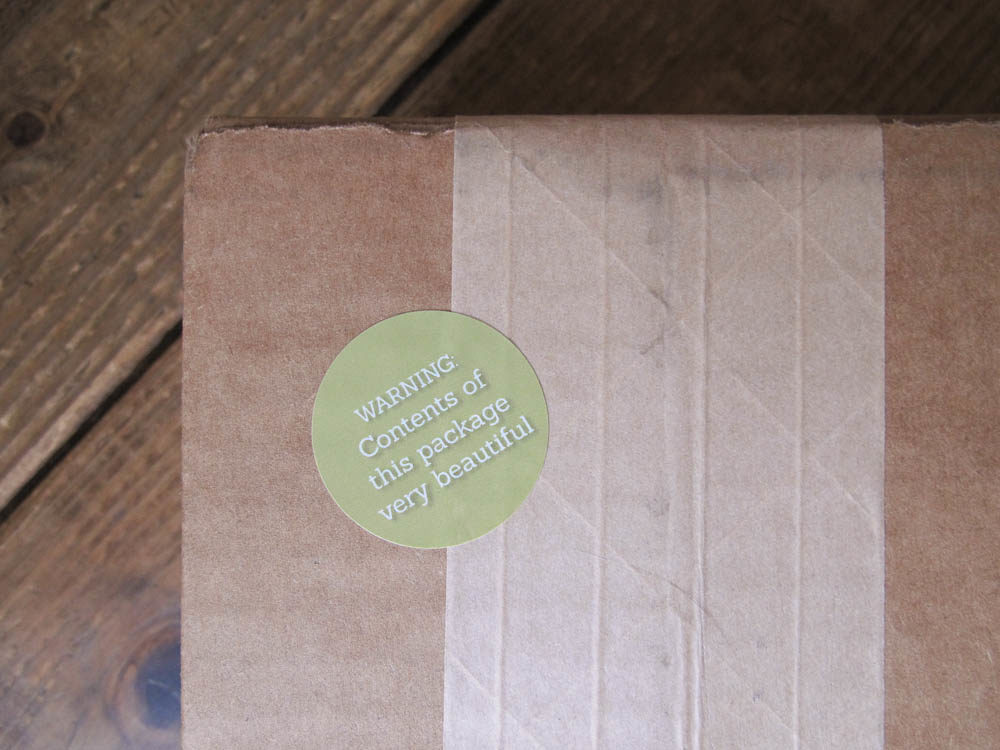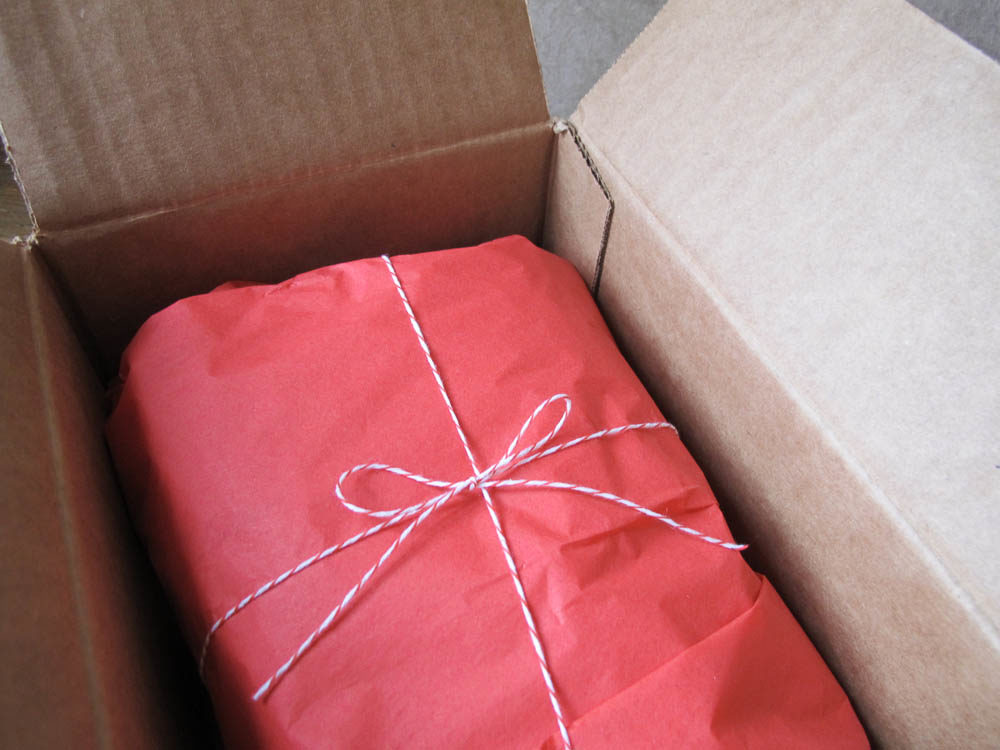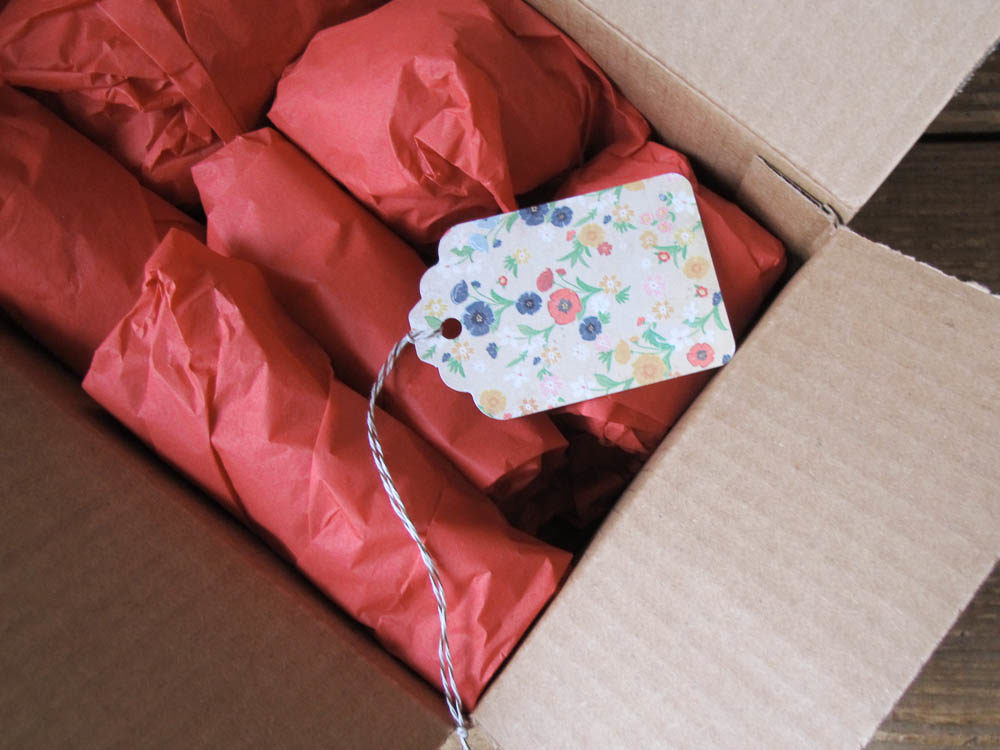10 tips to keep breakables safe during the holiday rush
Last year was my first holiday season as a vintage seller. One awful day early in the season, I came home to a disfigured box marked RETURN TO SENDER that looked like it had been run over by a truck, followed promptly by not one, but TWO emails waiting in my inbox telling me the merchandise I’d shipped had broken en route to their new homes. (I may have cried.)
Needless to say, I was crushed, as I’m sure many of you would understand. When you ship something, particularly during the holiday season, you want nothing more than to know that the recipient has received the item in mint condition, so they can feel nothing but the pure excitement of enjoying something new and lovely. And as a relative newbie to the shipping world, I was quite blindsided to know that my early packing methods were sub-par.
I’ve learned a lot since then—both from trial & error, and some of my wise peers in the Vintage Etsy Society Team, I have complete confidence in the safety of the merchandise I ship.
To spare you the pain of having your lovingly selected holiday gifts meet the same fate as some of my less fortunate lessons, I now pass the knowledge of what I’ve learned. Even during this time of year, when the US Postal Service, UPS and FedEx are shipping an ungodly quantity of boxes across the country (and the world), use these tips to keep your shipped items safe on their travels.
Use them wisely, pack well, and rejoice in the joy of your beloved gift recipients.

Choose an appropriately sized box
When in doubt, choose the box that’s a touch too big (rather than a touch too small). This will leave a little extra space for shock-absorbing packing materials, and avoid cramming items too tightly, which can increase the likelihood of breaks.
Reuse whenever you can
Packing materials can be used over and over again. In fact, about 80% of the packing materials I use to ship out Rosy Blu items have been used already. Save some money (and avoid landfill waste) by re-using packing paper, cardboard boxes, bubble wrap, styrofoam peanuts and those little air-filled plastic bags that come in shipping boxes to use up space. Before I had an online shop, I kept a big box filled with packing materials, smaller boxes and old newspaper for this purpose.
If you don’t have packing materials, old newspapers make a great substitute (although the ink can rub off on some delicate surfaces, so beware).
Never let two fragile things touch each other in a box
I learned this lesson the hard way on a sweet little pyrex casserole and lid, with just one thin layer of bubble wrap between the two (oh, the regret!). When you’re packing two breakable items in the same box, they should not touch one another. Instead, be sure to have at least an inch (or more, depending on how breakable they are) of bubble wrap and paper between them. The heaviest items go at the bottom of the box.

Apply bubble wrap + crumpled paper liberally
This is a great place to use old newspapers. Wrap each item first in a layer or two of bubble wrap, then in a few layers of paper. Place in the box, then pack wadded up paper and air bags (can we call them that?) to fill all the empty spaces in the box.
Also (this disclaimer is mostly for a certain small appliance company who shall remain nameless), heavy items will pop the air bags in two seconds flat. If you’re shipping something with some real weight to it—liiiike, my newly repaired food processor—use something more substantial that won’t arrive deflated, thus compromising the safety of the package. Please.
Use cling wrap to keep wrapped bits in place
Particularly when wrapping many small items, use cling wrap to keep bubble wrap in place around an item (way easier than plain old tape), and to hold small items together for easier, more secure packing.
For really fragile things, use two boxes
For extra protection, pack super-delicate items in one box, then suspend that box in a larger box. If the smaller box is cushioned on all sides with shock-absorbing layer of Styrofoam peanuts, your fragile items have one more layer of protection against falls and jostling.
There should be no movement in the box when you’re done
The box should be packed snugly (but not stuffed tightly) with packing materials so that when you close the lid and shake the box, you don’t hear any shifting, rattling or movement.
If you wouldn’t kick it down a flight of stairs . . . you need to pack it better.
I’m just saying. The postal worker handling your box (bless their heart) doesn’t know you’re sending glass ornaments to your aunt Edna in Alaska. While he or she is walking to the truck with arms full of 12 boxes, yours might topple off the pile. It is your mission to prepare it for the worst.
A little flair will go a long way
Spend just a moment to consider the recipient’s first impression when they open the box, and add one or two pretty bits to make the process a bit lovelier. Items from Rosy Blu are wrapped in tissue paper and tied up with red and white baker’s twine (Paper packages tied up with string! Because they are my favorite things! Do you get it?!) It takes two seconds, but makes the whole experience of unwrapping the box much more special.
And of course, a thoughtful, hand-written note trumps all.

Add instructions for the recipient
If the recipient opens the gift over a slate tile floor and a figurine rolls out of the packaging and crashes to the ground, all your careful packaging will be for naught. When you’re sending a fragile package, include a note with a heads-up to unwrap items over a soft, forgiving surface like a padded carpet floor or a bed.

There you have it! My very best shipping tips for fragile items.